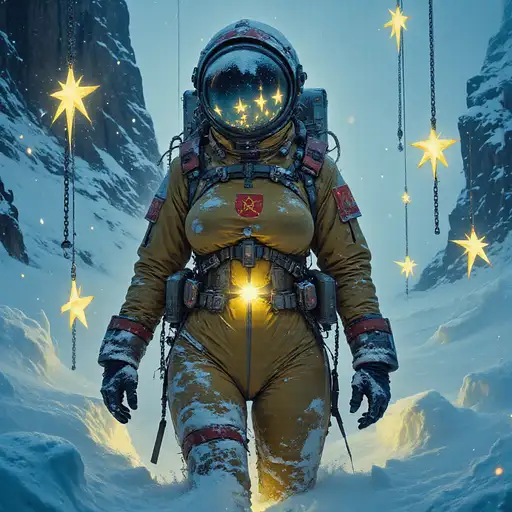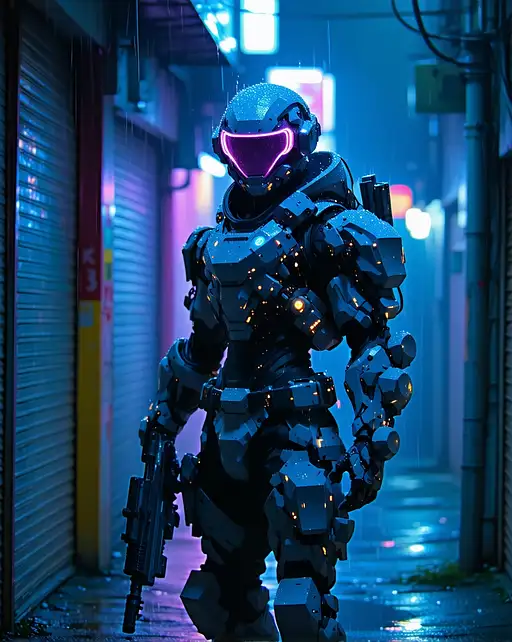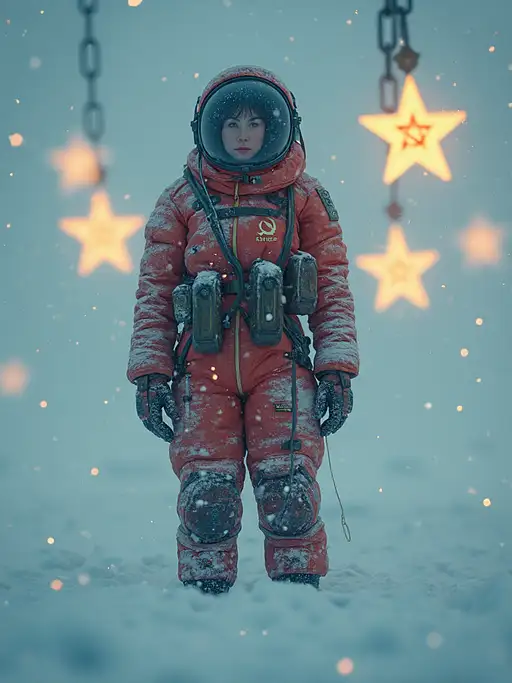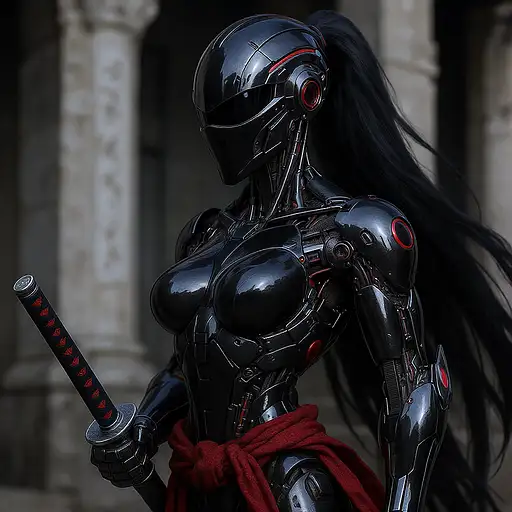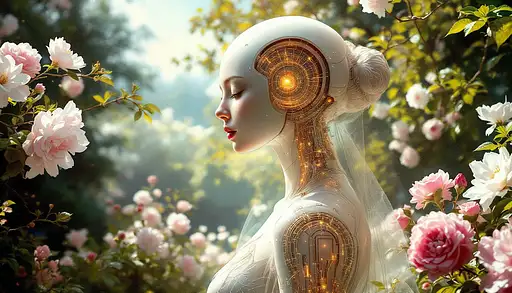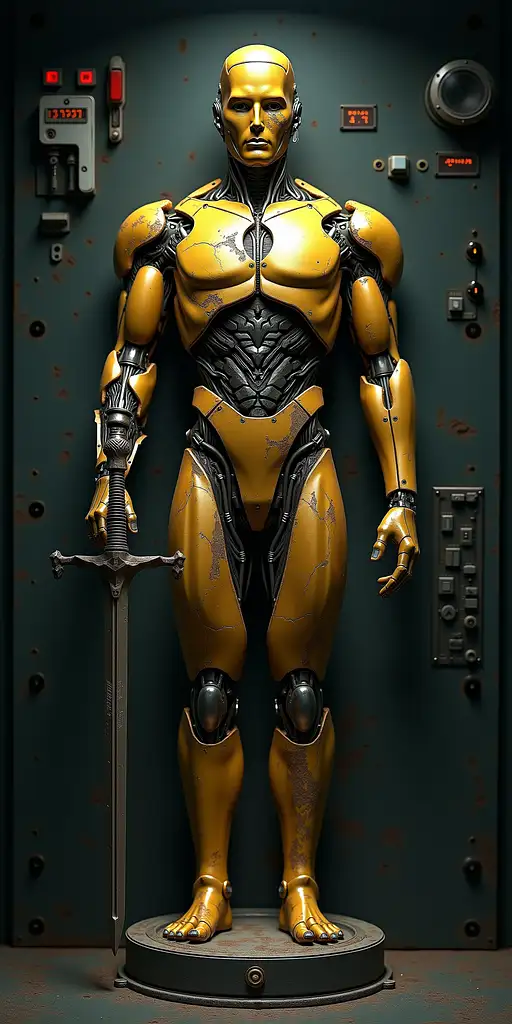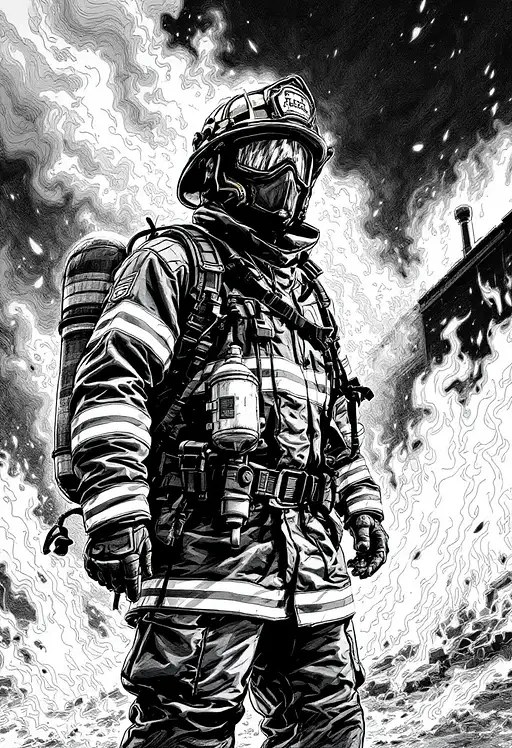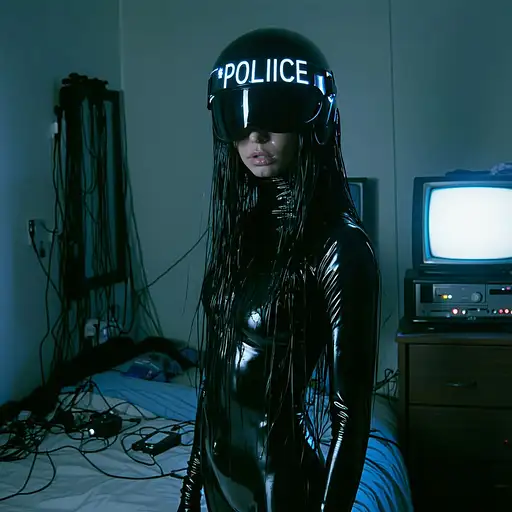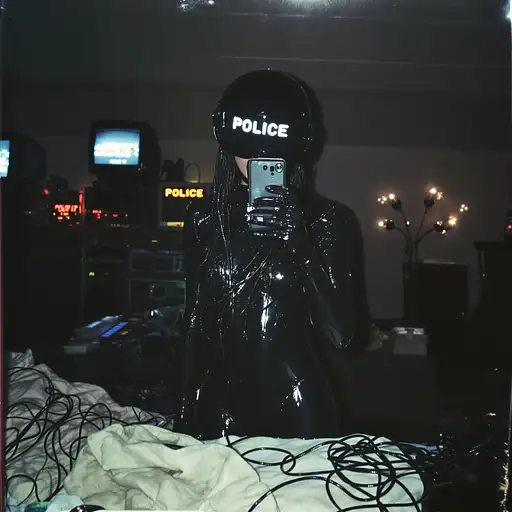
8 months ago
A futuristic museum hall filled with a soft, drifting haze of smoke. The entire space, including the walls and floor, is overwhelmingly white, almost disorienting in its purity. The ceiling is lined with long, continuous LED strips stretching across its entire surface. Their glow is partially absorbed by the swirling mist on the floor, creating an ethereal, diffused lighting effect. The room has no doors or windows, enhancing the surreal and otherworldly atmosphere. At the center of the space stands a minimalist glass display case. Inside, a breathtaking, floating female head is showcased, with bold red lips, editorial-style makeup, dramatic contouring, and shimmering metallic highlighter. She wears an extravagant avantgarde wig with black long textured hair with short fringe. The hair is black and has small metallic pins on it. Sculpted into futuristic, architectural shapes and intricate geometric designs. The head appears suspended in mid-air, as only the hair is fully visible, there is no body, just the striking, levitating form. Surrounding the display, elegantly dressed men and women in avant-garde, high-fashion futuristic attire stand in admiration, capturing the wig with their smartphones. Their outfits feature bold, sculptural silhouettes, reflective metallic fabrics, exaggerated shoulders, high-neck collars, intricate laser-cut details, and asymmetrical designs. Some wear visor-like glasses, glowing accessories, and gravity-defying structured garments. The bright flashes of their cameras reflect off the glass, creating a mesmerizing interplay of light. The scene carries an eerie yet mesmerizing surrealism, blending high fashion, advanced technology, and an air of mystery. The combination of futuristic aesthetics, editorial styling, and avant-garde fashion elements makes the composition feel like a high-end fashion editorial from a distant future.








